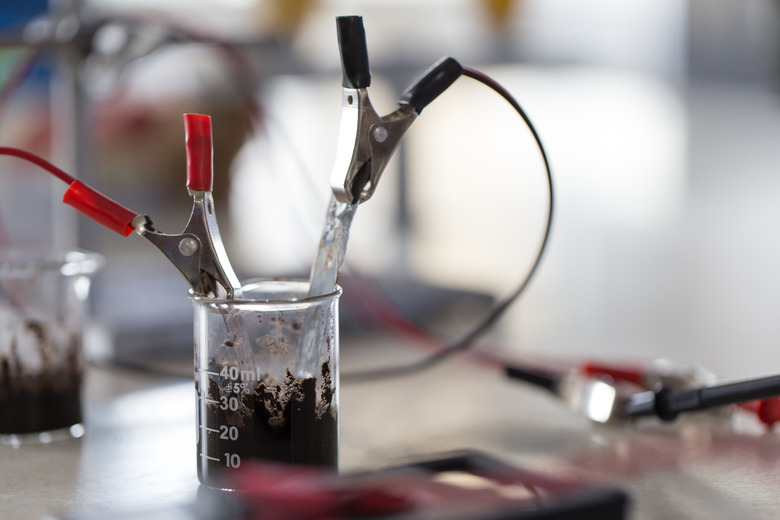How To Measure The Conductivity Of Water With A Multimeter
By touching the negative and positive leads of a multimeter that is on in the resistance setting allows you to measure the conductivity of water, a test of its purity. When water conducts electricity, it is made possible by water impurities such as metals. The standard unit of measure for conductivity is microsiemens per centimeter. For aquarium enthusiasts, for example, most fish in the United States thrive in water with a conductivity between 150 and 500 microsiemens per centimeter, while rivers have a range of conductivity between 50 to 1500 microsiemens per centimeter. Conductivity relates to the resistance to current flow of the water.
Step 1
Pour the water to be tested into the glass backing dish.
Step 2
Plug the red and black leads of the multimeter into its positive and negative ports, respectively. The red lead represents positive, while the black lead represents negative.
Step 3
Turn on the digital multimeter and then switch its measurement dial to the resistance setting. Resistance is denoted by the capital Greek letter omega. Omega represents the symbol for the ohm which is the unit of resistance.
Step 4
Touch the leads to the water at opposite ends of the longest dimension of the glass dish. Note the resistance in ohms that appears on the screen. For example, assume a resistance of 33 ohms.
Step 5
Measure the length, width and depth of the glass dish in centimeters. For example, use a length of 30 cm, a width of 15 cm and a depth of 3 cm.
Step 6
Multiply the width by the depth to obtain the area of the sides of the glass dish in square centimeters. Using the figures in the example results in 15 cm times 3 cm, or an area of 45 square cm.
Step 7
Divide the length by the product of the resistance and the area to arrive at the conductivity in units of siemens per meter. This yields 30 cm divided by 33 ohms times 45 square cm, or a conductivity of 0.02 siemens per meter. The siemens units equals one divided by the ohm.
Step 8
Convert the conductivity to microsiemens per cm by multiplying by 10,000. The prefix micro translates to one-millionth of a siemens. Finishing the exercise, results in 0.02 times 10,000, or a water conductivity of 202 microsiemens per cm. This is in the inhabitable range for some types of fish.
Things Needed
- Glass baking dish
- Digital multimeter
- Tape measure
TL;DR (Too Long; Didn't Read)
Use metric units to determine conductivity to get the correct result.
Cite This Article
MLA
Hirsch, William. "How To Measure The Conductivity Of Water With A Multimeter" sciencing.com, https://www.sciencing.com/measure-conductivity-water-multimeter-8523350/. 13 March 2018.
APA
Hirsch, William. (2018, March 13). How To Measure The Conductivity Of Water With A Multimeter. sciencing.com. Retrieved from https://www.sciencing.com/measure-conductivity-water-multimeter-8523350/
Chicago
Hirsch, William. How To Measure The Conductivity Of Water With A Multimeter last modified August 30, 2022. https://www.sciencing.com/measure-conductivity-water-multimeter-8523350/
